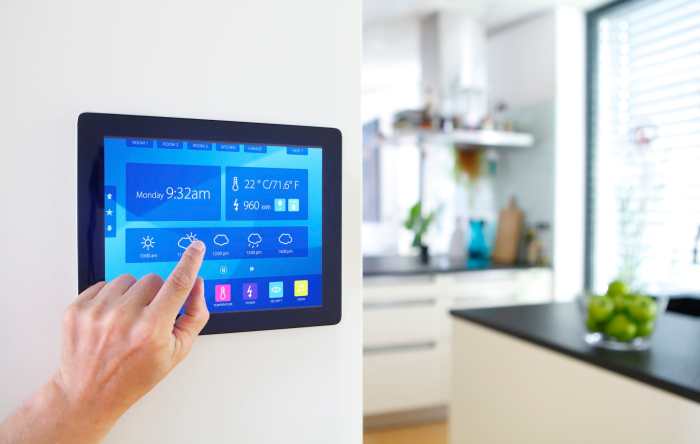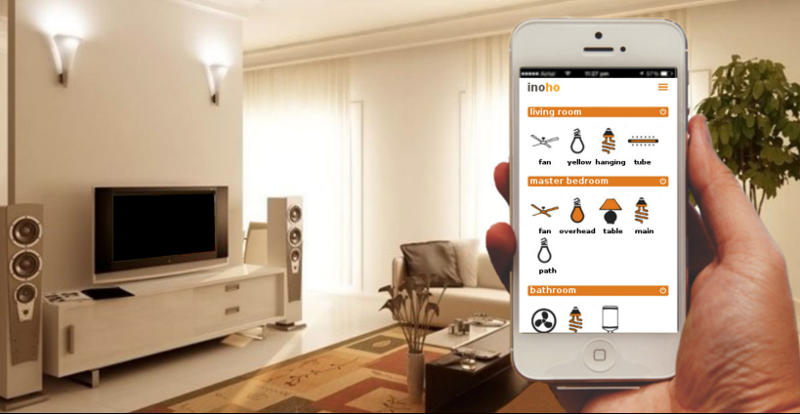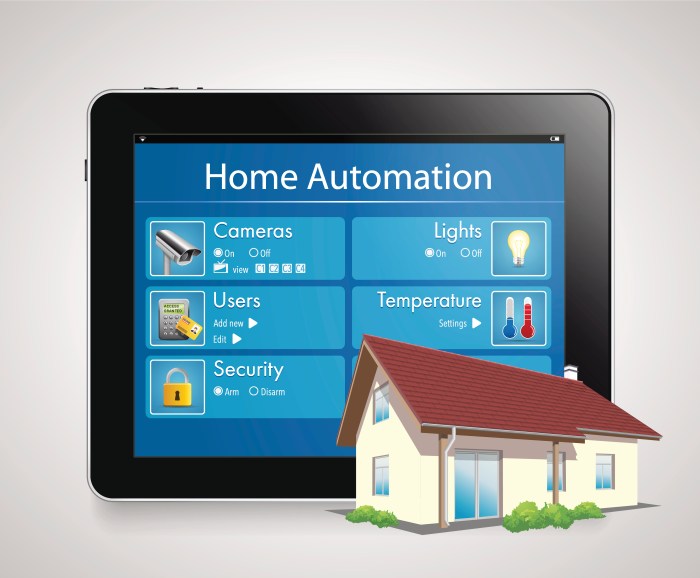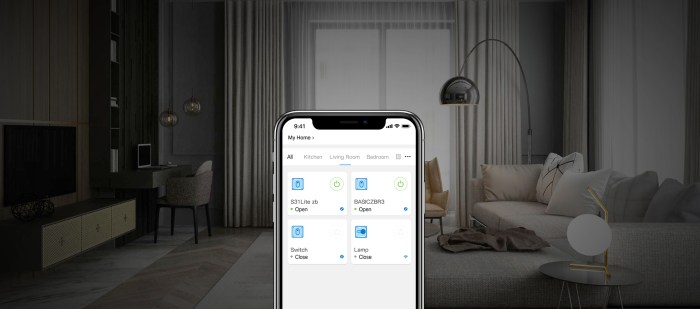In the era of smart homes, automating your living space has become a sought-after convenience. However, the cost of these systems can often be daunting. This article delves into the world of affordable home automation, unveiling the cheapest systems available, their features, and the factors to consider when choosing one that suits your needs.
Affordability plays a crucial role in the adoption of home automation. With budget-friendly options, homeowners can reap the benefits of convenience, energy efficiency, and enhanced security without breaking the bank. These systems offer a wide range of features, from basic lighting control to advanced voice-activated commands.
Introduction

Home automation systems bring convenience, energy efficiency, and security to modern homes. They allow homeowners to control various aspects of their living spaces, from lighting and heating to security and entertainment, using smart devices and apps. Embracing home automation not only enhances comfort but also offers significant savings on energy bills and improved home security.
Affordability plays a crucial role in choosing a home automation system. With numerous options available in the market, it’s essential to find a system that fits both your budget and your needs. Fortunately, there are several cost-effective home automation systems available that offer basic features and can be expanded as per your requirements.
Identifying Budget-Friendly Options
Embarking on the journey of home automation doesn’t necessitate breaking the bank. Several cost-effective home automation systems offer a range of features, compatibility, and installation requirements to suit various needs and budgets.
Budget-Friendly Home Automation Systems
Here’s a list of the most affordable home automation systems available in the market, along with key information about their features, compatibility, and installation requirements:
- Samsung SmartThings Hub: Priced around $70, this hub connects to various smart devices, enabling remote control and automation through the SmartThings app. It supports a wide range of devices, including lights, thermostats, and sensors, and offers easy installation with a user-friendly interface.
- Aqara Hub: Starting at $50, the Aqara Hub is a cost-effective option that works with a variety of Aqara smart home devices. It offers remote control, scheduling, and automation capabilities, and integrates with voice assistants like Amazon Alexa and Google Assistant. Installation is simple and can be done without the need for professional assistance.
- Wyze Sense Starter Kit: For around $50, this kit includes a hub, two contact sensors, and a motion sensor. It allows users to monitor doors, windows, and motion, and receive notifications on their smartphones. The Wyze Sense system is easy to install and compatible with various smart home platforms, including Amazon Alexa and Google Assistant.
- Sonoff Basic: Priced at around $10, the Sonoff Basic is a DIY smart switch that can be installed behind existing switches to enable remote control and scheduling of lights and appliances. It is compatible with various smart home platforms, including Amazon Alexa and Google Assistant, and offers easy installation with detailed instructions.
DIY vs. Professional Installation

When it comes to home automation, the question of whether to do it yourself (DIY) or hire a professional often arises. Both options have their own advantages and disadvantages, and the best choice depends on your budget, technical expertise, and comfort level with electrical work.
DIY Installation
DIY installation can be a cost-effective option for those who are comfortable with basic electrical work and have the necessary tools. It allows you to customize your home automation system according to your specific needs and preferences. Additionally, DIY installation can be a rewarding experience, giving you a sense of accomplishment and control over your home’s technology.
Tips for Successful DIY Installation:
Start with a plan
Before purchasing any components, create a detailed plan for your home automation system. This includes identifying the devices you want to automate, their locations, and how they will be connected.
Research and choose compatible components
Make sure the components you select are compatible with each other and with your home’s electrical system. Read reviews and compare products before making a purchase.
Follow installation instructions carefully
Each component will come with its own installation instructions. Read and follow these instructions carefully to ensure proper installation and avoid any safety hazards.
Test the system thoroughly
Once the installation is complete, test the system thoroughly to make sure it is functioning properly. This includes testing all devices, switches, and sensors to ensure they are communicating correctly.
Professional Installation
Hiring a professional installer can provide peace of mind and ensure that your home automation system is installed correctly and safely. Professional installers have the experience and expertise to handle complex installations and can provide valuable advice on choosing the right components and designing a system that meets your needs.
Additionally, professional installers can often offer warranties or guarantees on their work, giving you added peace of mind. Advantages of Professional Installation:
Expertise and experience
Professional installers have the knowledge and skills to handle complex installations and can ensure that your system is set up correctly and safely.
Warranty and support
Many professional installers offer warranties or guarantees on their work, giving you peace of mind and recourse in case of any issues.
Customization
Professional installers can help you customize your home automation system to meet your specific needs and preferences, ensuring that you get the most out of your investment.
Essential Components and Their Functions
Understanding the essential components of a budget-friendly home automation system is crucial for making informed purchasing decisions. These components work together to provide remote control and automation of various aspects of your home, enhancing convenience, energy efficiency, and security.
Essential Components of Budget-Friendly Home Automation Systems
| Component | Functionality | Role in the System |
|---|---|---|
| Smart Hub | Central communication point for all connected devices | Receives and transmits commands, manages device interactions, and provides a centralized platform for control. |
| Smart Plugs | Plug-in devices that control power to connected appliances | Enable remote on/off control, scheduling, and energy monitoring of individual devices. |
| Smart Bulbs | Wi-Fi enabled bulbs that can be controlled remotely | Allow for remote control of lighting, dimming, color changing, and scheduling. |
| Smart Thermostats | Wi-Fi enabled thermostats that can be controlled remotely | Provide remote control of heating and cooling systems, scheduling, and energy monitoring. |
| Motion Sensors | Detect movement and trigger pre-defined actions | Enhance security by triggering alarms or lights when motion is detected, and automate lighting control based on occupancy. |
| Door/Window Sensors | Detect the opening or closing of doors and windows | Enhance security by triggering alarms or notifications when doors or windows are opened or closed unexpectedly. |
| Smart Cameras | Wi-Fi enabled cameras that can be controlled remotely | Provide live video feeds, motion detection, and recording capabilities for security and monitoring purposes. |
These components form the foundation of a budget-friendly home automation system, offering basic control and automation features. Additional components can be added to expand functionality and customization, such as smart locks, smart speakers, and smart irrigation systems.
Connectivity and Compatibility

The seamless integration of your home automation system with existing smart devices and platforms is crucial for a cohesive and user-friendly experience. Compatibility ensures effortless control and interaction between various devices, allowing you to manage your home’s functions from a centralized hub or mobile app.
Several home automation systems excel in connectivity and compatibility. For instance, Samsung SmartThings offers extensive integration with popular smart devices, including thermostats, lights, locks, and appliances. Its open platform allows for easy integration with third-party devices and services, providing a comprehensive home automation solution.
Examples of Seamless Integration
- Amazon Alexa and Google Home: These voice assistants seamlessly integrate with various smart devices, enabling voice control of lights, thermostats, music, and more. Their compatibility with a wide range of devices makes them versatile additions to any home automation system.
- Apple HomeKit: Designed for Apple devices, HomeKit offers seamless integration with Apple’s ecosystem. Control your smart home devices using Siri voice commands or the Home app on your iPhone, iPad, or Mac.
- Zigbee and Z-Wave: These wireless communication protocols are widely used in home automation systems. They provide reliable and secure connectivity between devices, allowing for seamless communication and control.
Security and Privacy Considerations
As you embrace the convenience of home automation, it’s crucial to address the inherent security and privacy concerns that arise with these systems. Let’s delve into the potential risks and explore measures to safeguard your smart home and protect your sensitive data.
Potential Security and Privacy Risks
Home automation systems, while offering immense convenience, may introduce new avenues for unauthorized access and data breaches. Here are some key risks to be aware of:
- Unauthorized Access: Hackers can exploit vulnerabilities in your system to gain unauthorized access, potentially allowing them to control your devices, monitor your activities, and compromise your privacy.
- Data Collection and Misuse: Home automation systems collect various data about your usage patterns, preferences, and routines. This data, if not properly secured, could be misused by malicious actors for targeted advertising, identity theft, or even surveillance.
- Vulnerability to Malware and Phishing Attacks: Home automation devices, like any connected device, can be susceptible to malware and phishing attacks. These attacks can compromise your system, steal sensitive information, or even render your devices unusable.
Securing Your Home Automation System
To mitigate the aforementioned risks and protect your home automation system, consider the following security measures:
- Strong Passwords: Use strong, unique passwords for your home automation system and regularly change them. Avoid using easily guessable combinations or reusing passwords across multiple accounts.
- Regular System Updates: Stay up-to-date with the latest software updates for your home automation devices and hub. These updates often include security patches that address vulnerabilities and enhance the overall security of your system.
- Secure Network Configuration: Configure your home network with strong encryption protocols and consider implementing a virtual private network (VPN) to encrypt all internet traffic, adding an extra layer of protection.
- Enable Two-Factor Authentication: If available, enable two-factor authentication (2FA) for your home automation system. This adds an additional layer of security by requiring a second form of identification, such as a code sent to your mobile device, when logging in.
- Physical Security: Protect the physical access points to your home automation devices, such as smart locks and cameras. Ensure that doors and windows are properly secured and consider installing motion sensors or alarms to deter unauthorized entry.
Protecting Your Privacy
In addition to security measures, it’s essential to safeguard your privacy when using home automation systems:
- Review Privacy Policies: Carefully review the privacy policies of the manufacturers and service providers associated with your home automation system. Understand how your data is collected, used, and shared.
- Opt-Out of Data Sharing: If possible, opt-out of data sharing options that you deem unnecessary. This can help limit the amount of personal information that is collected and shared.
- Use Privacy-Focused Devices and Services: Consider choosing home automation devices and services that prioritize privacy and offer robust data protection features.
By implementing these security and privacy measures, you can significantly reduce the risks associated with home automation systems and enjoy the benefits of a connected home with peace of mind.
Scalability and Future-Proofing
When selecting a home automation system, scalability is a key consideration. As your needs and preferences evolve, you want a system that can grow and adapt with you. A scalable system allows you to add new devices and features without having to overhaul the entire system.
To ensure scalability, consider the following factors:
Choosing a Scalable System
- Modular Design: Opt for a system with a modular design, allowing you to add components as needed. This flexibility ensures that you can expand your system without replacing existing devices.
- Open Platform: Choose an open platform system that supports various devices and protocols. This compatibility enables you to integrate new devices from different brands and technologies, ensuring future-proofing.
- Software Updates: Ensure that the system offers regular software updates. These updates often include new features, bug fixes, and security patches, keeping your system up-to-date and secure.
- Scalable Infrastructure: Consider the scalability of the system’s infrastructure, such as the hub or gateway. A powerful hub with ample processing power and memory can handle the increased demands of additional devices and features.
User-Friendliness and Accessibility

User-friendliness and accessibility are crucial factors to consider when selecting a budget-friendly home automation system. Systems with intuitive interfaces and easy-to-use mobile apps are essential for a seamless user experience.
Look for systems that offer user-friendly mobile apps with clear and simple navigation, making it easy to control your smart devices from anywhere, anytime. Additionally, consider systems that provide detailed documentation and tutorials to help you set up and use the system effectively.
Examples of User-Friendly Systems
- Samsung SmartThings: Known for its user-friendly mobile app and extensive compatibility with various smart devices.
- Google Home: Offers a simple and intuitive interface, making it easy to control smart devices with voice commands.
- Amazon Echo: Features a user-friendly mobile app and voice control through Alexa, providing a convenient way to manage smart devices.
Long-Term Costs and Maintenance

Owning and maintaining a home automation system involves long-term costs that go beyond the initial investment. These costs include ongoing expenses like energy consumption, subscription fees, maintenance, repairs, and potential upgrades. Considering these factors is crucial in evaluating the overall cost-effectiveness of a home automation system.
Factors to Consider
- Energy Consumption: Home automation systems can affect energy usage depending on the devices and features used. Smart thermostats, lighting controls, and energy-efficient appliances can lead to savings, while other devices may increase consumption.
- Subscription Fees: Some home automation systems require ongoing subscription fees for cloud services, software updates, or access to certain features. These fees can vary based on the system and the services offered.
- Maintenance and Repairs: Like any electronic system, home automation components may require maintenance and repairs over time. Regular maintenance can help prevent issues and extend the system’s lifespan, while repairs can address unexpected malfunctions.
- Potential Upgrades: Technology advances rapidly, and new home automation devices and features are constantly emerging. If you want to keep your system up-to-date with the latest innovations, you may need to invest in upgrades or replacements.
Conclusion
In conclusion, selecting the cheapest home automation system requires careful consideration of individual needs, budget, technical capabilities, and future-proofing requirements. By understanding the essential components, connectivity options, security aspects, and scalability potential, homeowners can make informed decisions.
For those seeking basic automation features, DIY systems with limited functionality can provide cost-effective solutions. However, those desiring more advanced capabilities and seamless integration may benefit from professional installation and comprehensive systems. Ultimately, the best choice depends on the specific requirements and preferences of each homeowner.
Closure
Choosing the cheapest home automation system requires careful consideration of your needs, technical expertise, and future plans. Whether you opt for a DIY installation or professional assistance, ensuring compatibility, security, and scalability is essential. By weighing the factors discussed in this article, you can make an informed decision and embark on your journey towards a smarter, more efficient home.
Q&A
What are the benefits of owning a home automation system?
Home automation systems offer convenience, energy efficiency, enhanced security, and remote control of various devices in your home.
How do I choose the cheapest home automation system for my needs?
Consider your budget, technical expertise, desired features, compatibility with existing devices, and scalability for future expansion.
What are some tips for a successful DIY installation?
Plan your system layout, read manuals carefully, ensure proper wiring, test components before installation, and seek assistance if needed.
How can I secure my home automation system from cyber threats?
Use strong passwords, enable two-factor authentication, keep firmware up to date, use a VPN, and monitor network activity.
What factors should I consider when evaluating the long-term costs of a home automation system?
Consider the initial cost, installation expenses, maintenance fees, energy savings, and potential resale value.